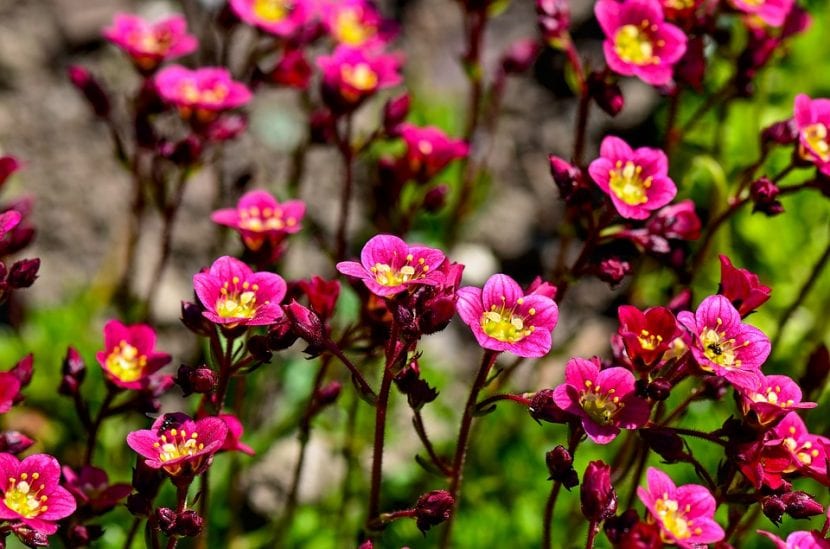
All the saxifrage They are the typical plants that look good both in pots and planters, as in those small corners of the garden. They are a great option when looking for some color in the home and you don't have much experience caring for green.
Its maintenance is not complicated, in fact, with a minimum care they will bloom every year, so it will not be difficult for you to see its wonderful flowers. Anyway, next we are going to tell you what are your needs so that no problems arise.
Origin and characteristics
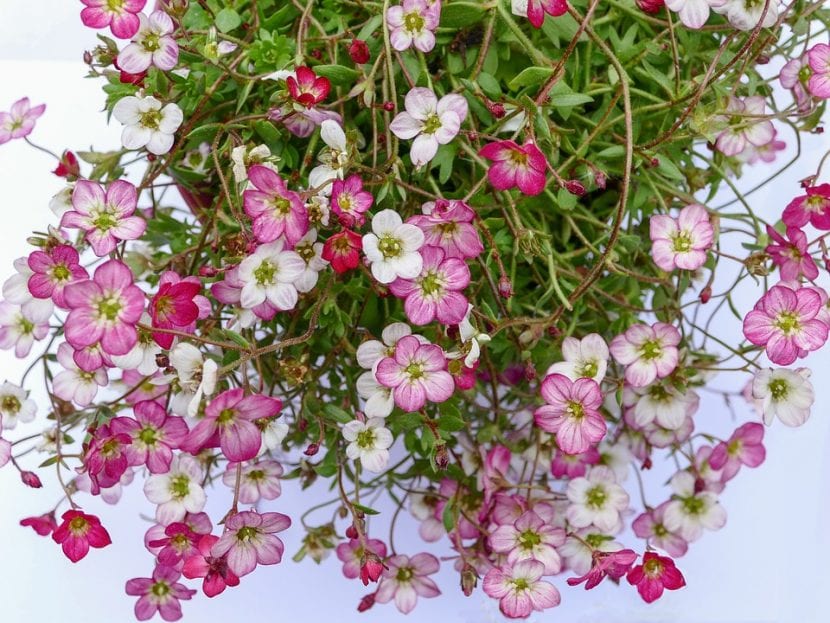
They are annual or biannual plants, rarely perennial, that belong to the genus Saxifraga, which is composed of about 440 species native to temperate and alpine regions. Both its size and its leaves and the color of its flowers vary a lot depending on the species, but roughly we can say that They grow between 10 and 70cm, which have very thin stems of less than 0,5cm, from which leaves sprout in green rosettes.
Its flowers measure around 1-1,5cm in diameter, and have 5 petals of very different colors (yellow, white, pink, purple, bicolor). The fruit is a capsule that finishes maturing towards mid-summer / early autumn.
Main species
The most recommended are:
- granulated saxifrage: it is a perennial plant up to 50cm tall and white flowers, native to Europe.
- Saxifraga longifolia: known as the king's crown or Altamira, it is a perennial plant up to 55cm tall with white flowers speckled with red, endemic to the Pyrenees, and which is distributed throughout the rest of Europe and Africa.
- Saxifraga stolonifera: it is a perennial plant of up to 50cm in height and very showy white flowers with a bright yellow ovary, native to Asia.
- Saxifraga paniculata: it is a perennial, tussock plant about 10-20cm high, with white or cream colored flowers native to central and southern Europe.
- Saxifraga arendsii: it is a lively plant up to 30cm tall, with red flowers, native to Asia.
- Saxifraga spathularis: it is a lively plant up to 30cm tall, with white flowers with red dots, native to Europe.
What are their cares?
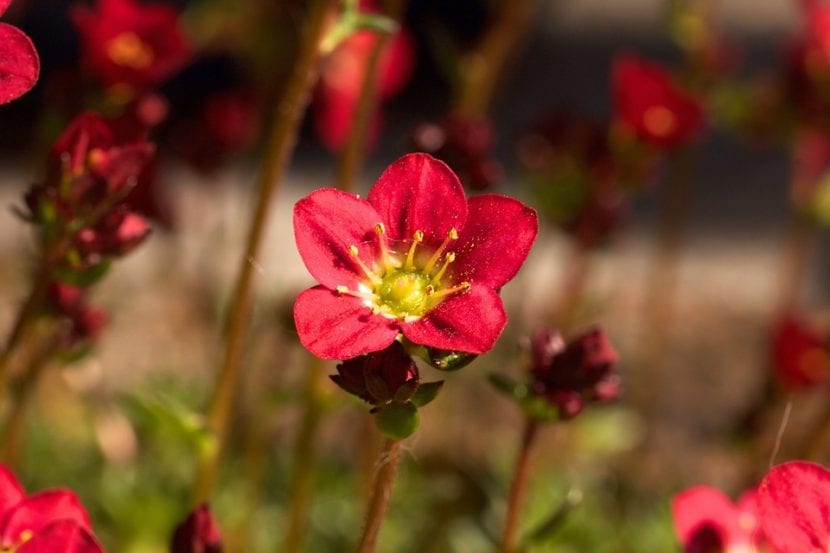
If you want to have a copy, we recommend you take care of it in the following way:
Location
They are plants that have to be abroad, if possible in an area where they are in direct sunlight, although they tolerate semi-shade. As they do not grow much, you can grow them in the corner that you like the most.
Earth
- Flower pot: it is advisable to fill it with substrates that drain water well and quickly, such as universal cultivation substrate (for sale here) mixed with perlite (for sale here) in equal parts.
- Garden: they grow in well-drained, sandy-type soils. If yours is not like that, make a planting hole of about 50cm x 50cm, cover it with shading mesh and fill it with the substrate mentioned above.
Irrigation
Irrigation it has to be moderate to low. During the summer, and depending on the climate, you should water an average of three times a week, while in winter with one every fifteen days or even less if you live in an area where there are frequent frosts.
Subscriber
During all the warm months of the yearWhen the temperature remains above 15 degrees Celsius, it is very important to fertilize the saxifraga, either with organic fertilizers -recommendable- or with (chemical) compounds following the indications specified on the product packaging.
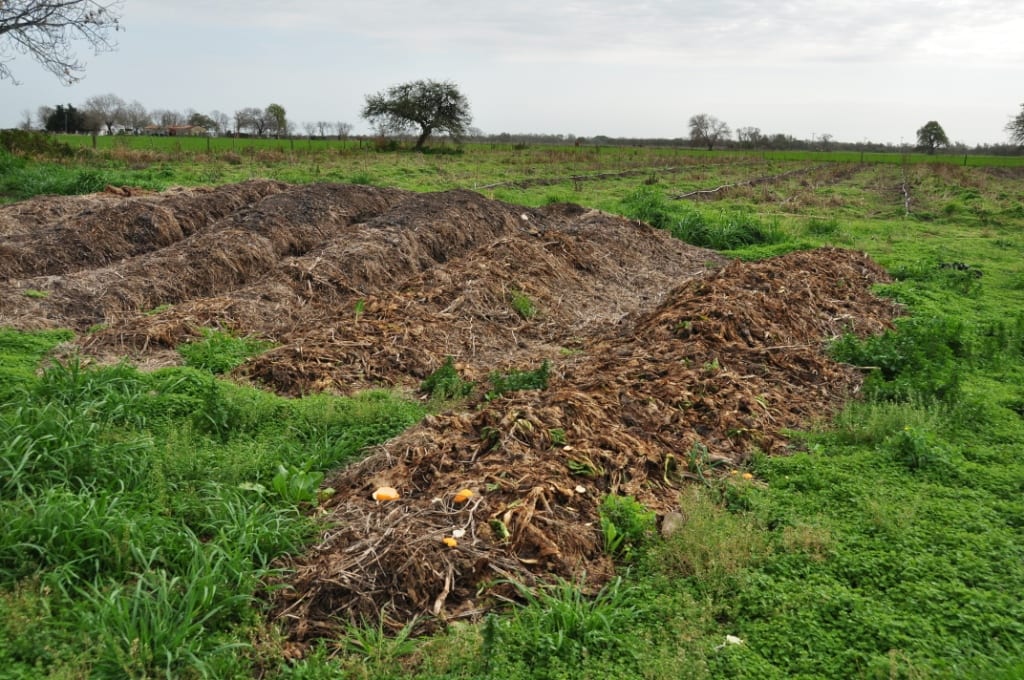
Pruning
They do not need it, although it is true that dry, diseased and weak leaves, as well as withered flowers, must be cut with scissors previously disinfected with pharmacy alcohol or a few drops of dishwasher.
Multiplication
They multiply by seeds or cuttings in spring. Let's see how to proceed in each case:
Seeds
- First, put them in a glass of water for 24 hours.
- The next day, fill a seedling tray (for sale here) with universal cultivation substrate, and water conscientiously.
- Next, sow the seeds that sank, putting a maximum of two in each socket.
- Finally, cover them with a thin layer of substrate and moisten it with water, using a spray bottle.
Once the seedbed has been placed outside, in semi-shade, and keeping the substrate moist, the seeds will germinate in about 15 days.
Cuttings
Succulent species, that is, those with fleshy leaves and stems, and perennials / perennials, can be multiplied simply by taking a piece and planting it in a pot with vermiculite (for sale here) which should always be kept damp but not flooded.
Rusticity
They are plants that resist the cold, but the frosts usually harm them. Therefore, if the temperature drops below 0 degrees in your area, it is advisable to protect them inside the home, in a room without heating. If the substrate or soil is kept dry, they hold up to -7ºC.
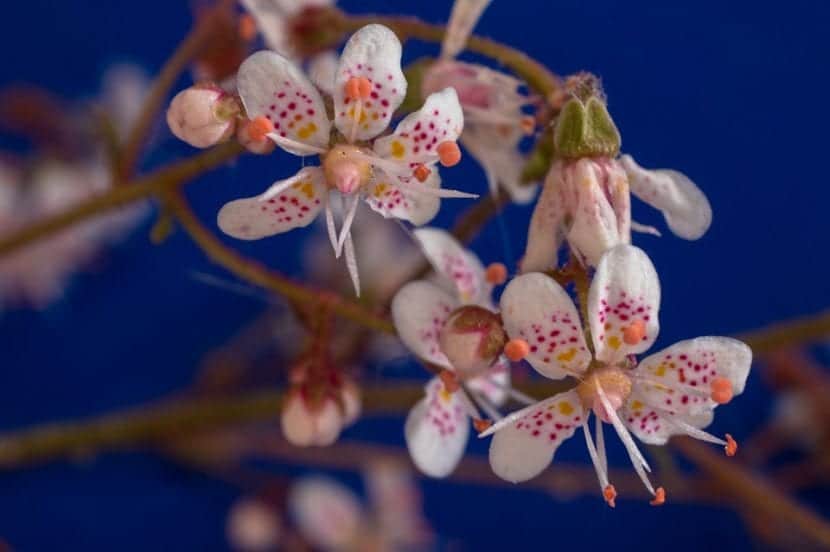
What did you think of the saxifraga?